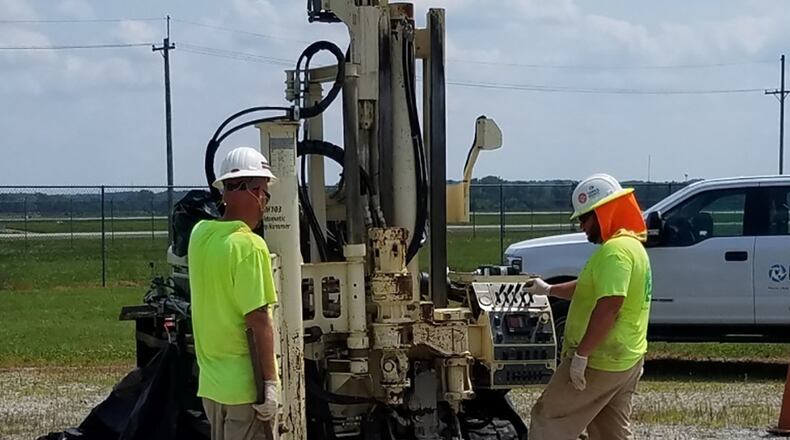This has been a vexing issue in the Dayton area, with two cities — Dayton and Fairborn — involved in lawsuits against the government and against manufacturers, respectively, over PFAS contamination.
PFAS is short for per- and polyfluoroalkyl substances, which were once used in nonstick frying pans, water-repellent sports gear, stain-resistant rugs, firefighting foam and elsewhere. The substance was voluntarily phased out in the U.S., but it remains in some products and in the environment.
Wright-Patterson Air Force Base environmental engineers have steadily probed the presence of PFAS and PFOA chemicals under and around the base.
Firefighting foam containing the chemicals has been used on the base in the past, but a base spokeswoman has said the Air Force in recent years has replaced legacy firefighting foam in emergency vehicles and hangar fire prevention systems with a formula that meets EPA guidelines.
Last year, Ohio Gov. Mike DeWine signed a bill into law prohibiting the use of PFAS-containing foam in firefighter training.
“PFAS chemicals have emerged as widespread contaminants to the drinking water sources of military bases across the country largely due to their presence in aqueous film-forming foam (AFFF) used by the military,” the senators wrote Austin. “Members of the military, veterans and civilians who have served at military installations and/or live in the surrounding communities found to have been contaminated with PFAS face health risks related to exposure to PFAS chemicals, as these materials are found in AFFF, in personal protective equipment used by firefighters and in standard consumer products.”
They added: “Our service members, military families, veterans and defense communities deserve the department’s full attention to appropriately address the scope and severity of PFAS contamination. We ask you to honor that responsibility and take the steps necessary to prioritize this hazard impacting our communities.”
The senators also outlined findings of a recent National Academies of Science, Engineering, and Medicine report that calls for expanded access to PFAS testing for Americans with a history of exposure to the chemicals.
The letter was sent as well to William LaPlante, undersecretary of defense for acquisition and sustainment, and Shalanda Young, director of the Office of Management and Budget.
An Environmental Protection Agency Superfund designation proposed last month would make businesses and organizations, including the Department of Defense, responsible for clean-up of “forever chemicals.”
About the Author

